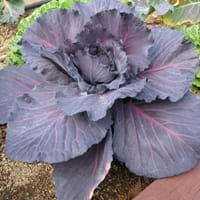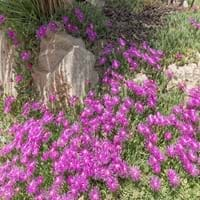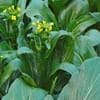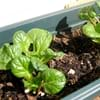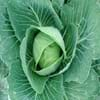Life Span
Annual
Perennial
Type
Vegetable
Flowering Plants
Origin
Southern Europe, Western Europe, Mediterranean
Southern Africa, South Africa
Types
it is a type of cabbage
Not Available
Habitat
agricultural areas
By seashore, gardens
USDA Hardiness Zone
Not Available
Not Available
AHS Heat Zone
6-1
Not Available
Sunset Zone
A1, A2, A3, H1, H2, 1a, 1b, 2a, 2b, 3a, 3b, 4, 5, 6, 7, 8, 9, 10, 11, 12, 13, 14, 15, 16, 17, 18, 19, 20, 21, 22, 23, 24
Not Available
Habit
Rosette/Stemless
Not Available
Minimum Height
Not Available
Minimum Width
Not Available
Flower Color
Yellow
Not Available
Flower Color Modifier
Bicolor
Not Available
Fruit Color
Not Available
Non Fruiting Plant
Leaf Color in Spring
Dark Green
Not Available
Leaf Color in Summer
Red, Purple
Not Available
Leaf Color in Fall
Red, Purple, Burgundy
Not Available
Leaf Color in Winter
Red, Purple, Burgundy
Not Available
Leaf Shape
Spinach Type
Succulent
Plant Season
Spring, Summer, Fall, Winter
Spring, Summer, Fall, Winter
Sunlight
Full Sun, Partial Sun
Full Sun, Partial Sun
Growth Rate
Fast
Not Available
Type of Soil
Loam, Sand
Not Available
The pH of Soil
Acidic
Not Available
Soil Drainage
Well drained
Well drained
Bloom Time
Spring, Late Spring, Early Summer
Not Available
Tolerances
Drought
Not Available
Where to Plant?
Container, Ground, Pot
Container, Ground, Pot
How to Plant?
Seedlings
Stem Planting, Transplanting
Plant Maintenance
High
Medium
Watering Requirements
Do Not over Water, Keep ground moist
Average Water Needs, Do Not over Water, Never Over-water, Requires watering in the growing season
In Summer
Lots of watering
Average Water
In Spring
Moderate
Average Water
In Winter
Average Water
Average Water
Soil pH
Acidic
Not Available
Soil Type
Loam, Sand
Not Available
Soil Drainage Capacity
Well drained
Well drained
Sun Exposure
Full Sun, Partial Sun
Full Sun, Partial Sun
Pruning
Requires very little pruning
Remove damaged leaves, Remove dead branches, Remove dead leaves
Fertilizers
All-Purpose Liquid Fertilizer, Fertilize when new
All-Purpose Liquid Fertilizer
Pests and Diseases
Alternaria Leaf Spot, Anthracnose, Aphids, Bacterial soft rot, Beet armyworm, Black rot, Blackleg, Cabbage looper, Cabbageworm, Clubroot, Cutworms, Damping-off, Diamondback moth, Downy mildew, Flea Beetles, Powdery mildew, Red blotch, Ring spot, Root knot nematode, Slugs, Snails, Thripes, Watery soft rot, White mold, white rust
Red blotch
Plant Tolerance
Drought
Drought
Flower Petal Number
Single
Single
Showy Fruit
No
Not Available
Edible Fruit
No
Not Available
Fragrant Fruit
No
Not Available
Fragrant Leaf
Yes
Not Available
Fragrant Bark/Stem
No
Not Available
Showy Foliage
Yes
Not Available
Showy Bark
No
Not Available
Foliage Texture
Bold
Bold
Foliage Sheen
Matte
Not Available
Self-Sowing
Yes
Not Available
Attracts
Not Available
Butterflies
Allergy
Not Available
Not Available
Aesthetic Uses
Not Used For Aesthetic Purpose
Beautification, Bouquets, Cottage Garden, Decorating walls, Ground Cover, Landscape Designing, Showy Purposes, Used for decorating walls, fences, gates, hedges, etc.
Beauty Benefits
Not Available
Not Available
Environmental Uses
Air purification
Food for insects
Medicinal Uses
Cancer, Detoxifies lever, Glucose
No Medicinal Use
Part of Plant Used
Leaves
Flowers
Other Uses
Culinary use, Used As Food
Decoration Purposes, Showy Purposes, Used as Ornamental plant
Used As Indoor Plant
No
No
Used As Outdoor Plant
Yes
Yes
Garden Design
Bedding Plant, Container, Edible, Herb / Vegetable
Container, Edging, Groundcover, Mixed Border, Rock Garden, Wall
Botanical Name
BRASSICA oleracea 'Red Express'
DELOSPERMA
Common Name
Red Cabbage, Red Express Cabbage
Trailing Iceplant
In Hindi
लाल पत्ता गोभी
Delosperma cooperi
In German
Rotkohl
Mittagsblume
In French
Chou rouge
Delosperma cooperi
In Spanish
Repollo rojo
Delosperma cooperi
In Greek
Κόκκινο λάχανο
Delosperma cooperi
In Portuguese
Red Cabbage
Delosperma cooperi
In Polish
Czerwona kapusta
Delosperma cooperi
In Latin
Brassica Rubrum
Delosperma cooperi
Phylum
Magnoliophyta
Not Available
Class
Magnoliopsida
Magnoliopsida
Order
Brassicales
Caryophyllales
Family
Brassicaceae
Aizoaceae
Genus
Brassica
Caryophyllales
Clade
Angiosperms, Eudicots, Rosids
Angiosperms, Core eudicots, Eudicots
Tribe
Not Available
Not Available
Subfamily
Not Available
Ruschioideae
Season and Care of Red Cabbage and Delosperma cooperi
Season and care of Red Cabbage and Delosperma cooperi is important to know. While considering everything about Red Cabbage and Delosperma cooperi Care, growing season is an essential factor. Red Cabbage season is Spring, Summer, Fall and Winter and Delosperma cooperi season is Spring, Summer, Fall and Winter. The type of soil for Red Cabbage is Loam, Sand and for Delosperma cooperi is Not Available while the PH of soil for Red Cabbage is Acidic and for Delosperma cooperi is Not Available.
Red Cabbage and Delosperma cooperi Physical Information
Red Cabbage and Delosperma cooperi physical information is very important for comparison. Red Cabbage height is 20.30 cm and width 20.30 cm whereas Delosperma cooperi height is Not Available and width Not Available. The color specification of Red Cabbage and Delosperma cooperi are as follows:
Red Cabbage flower color: Yellow
Red Cabbage leaf color: Dark Green
Delosperma cooperi flower color: Not Available
- Delosperma cooperi leaf color: Not Available
Care of Red Cabbage and Delosperma cooperi
Care of Red Cabbage and Delosperma cooperi include pruning, fertilizers, watering etc. Red Cabbage pruning is done Requires very little pruning and Delosperma cooperi pruning is done Remove damaged leaves, Remove dead branches and Remove dead leaves. In summer Red Cabbage needs Lots of watering and in winter, it needs Average Water. Whereas, in summer Delosperma cooperi needs Average Water and in winter, it needs Average Water.
